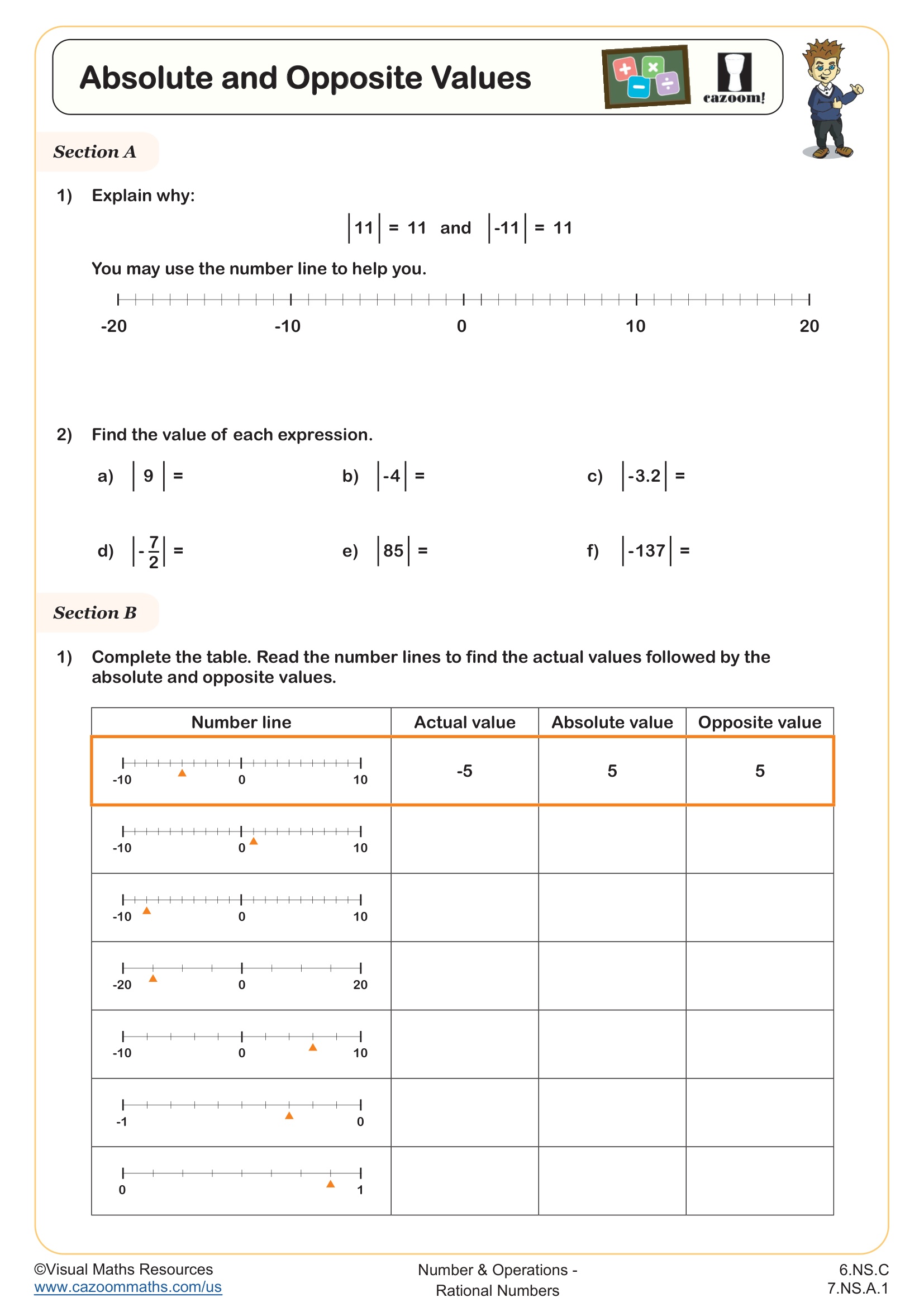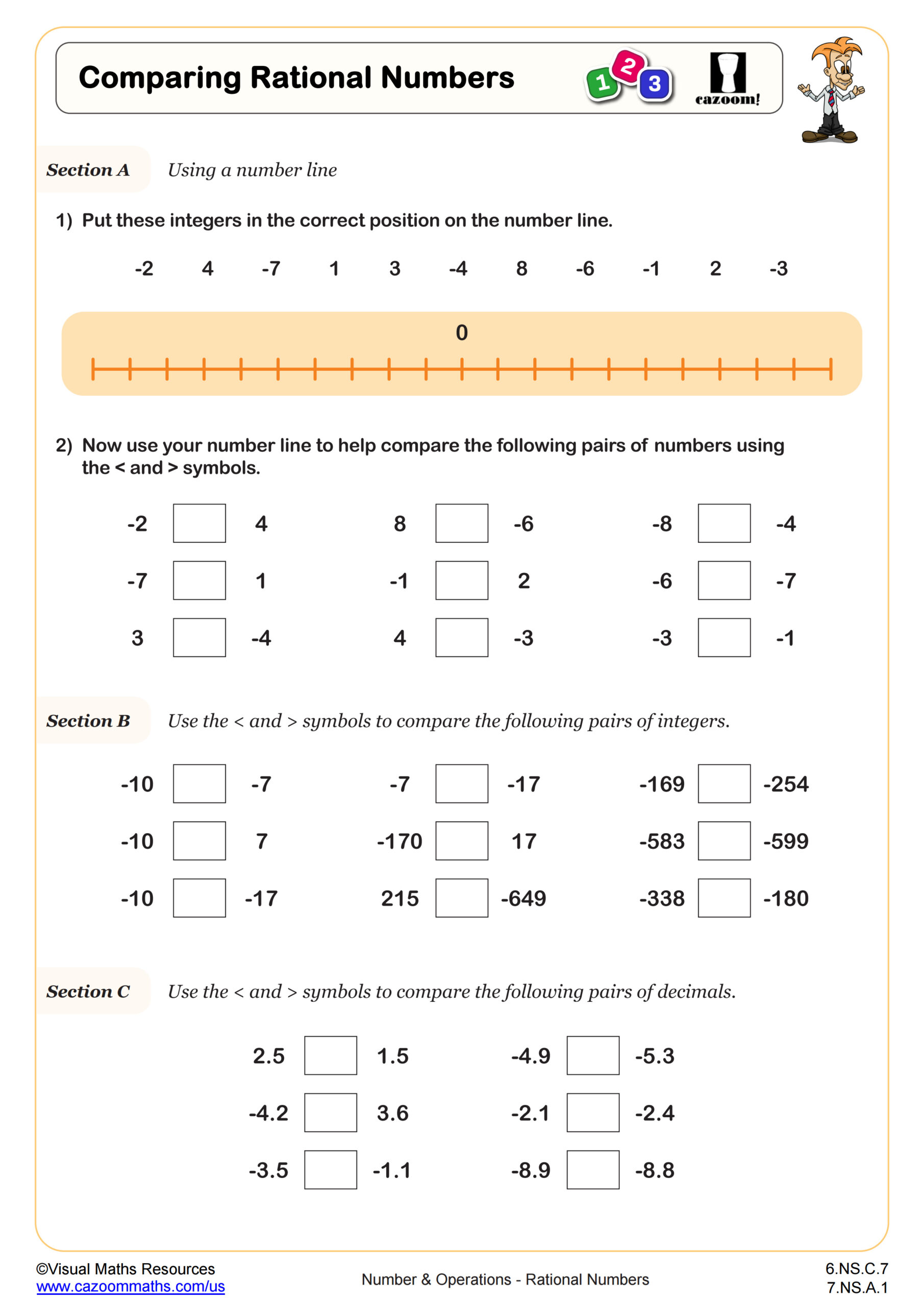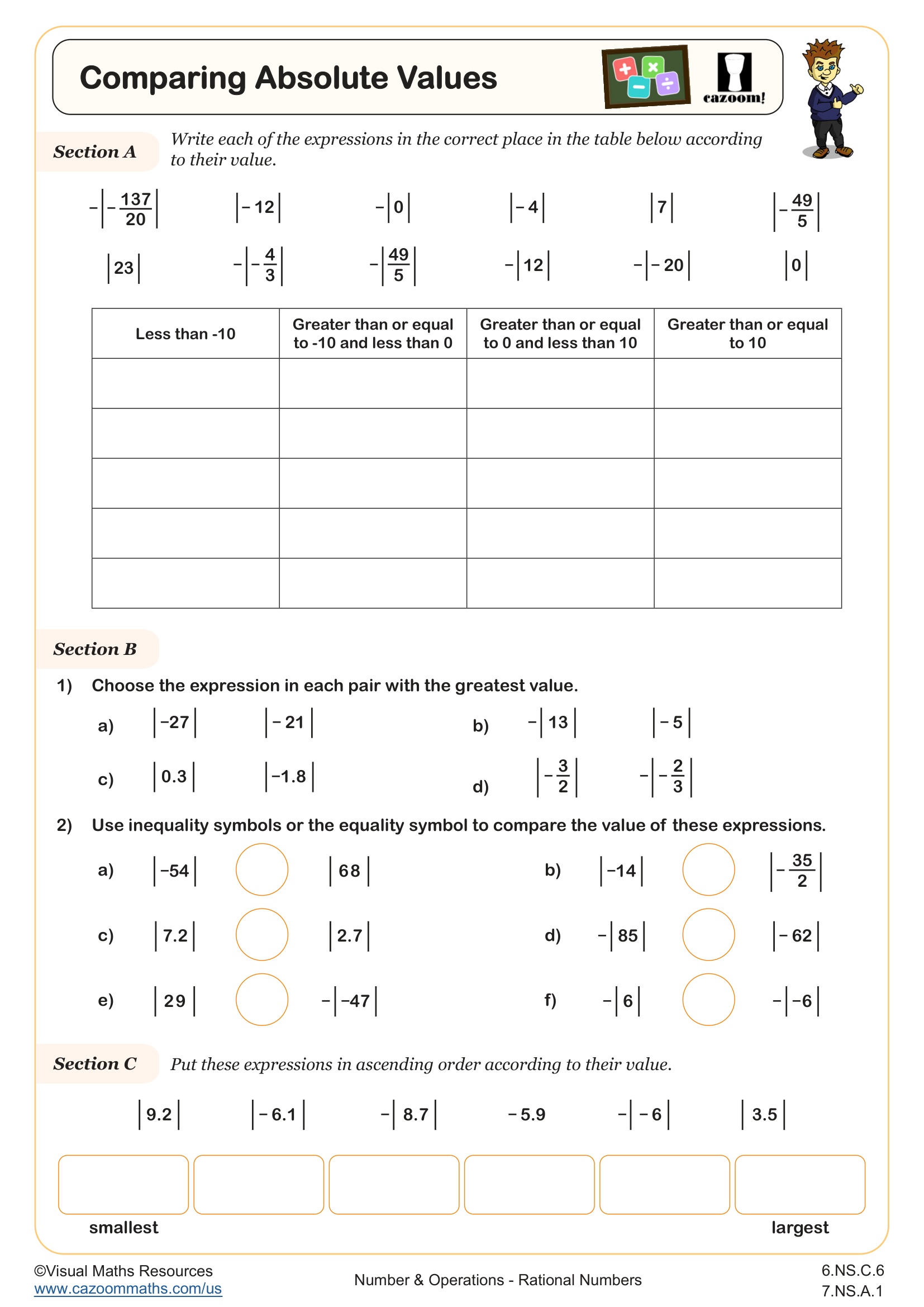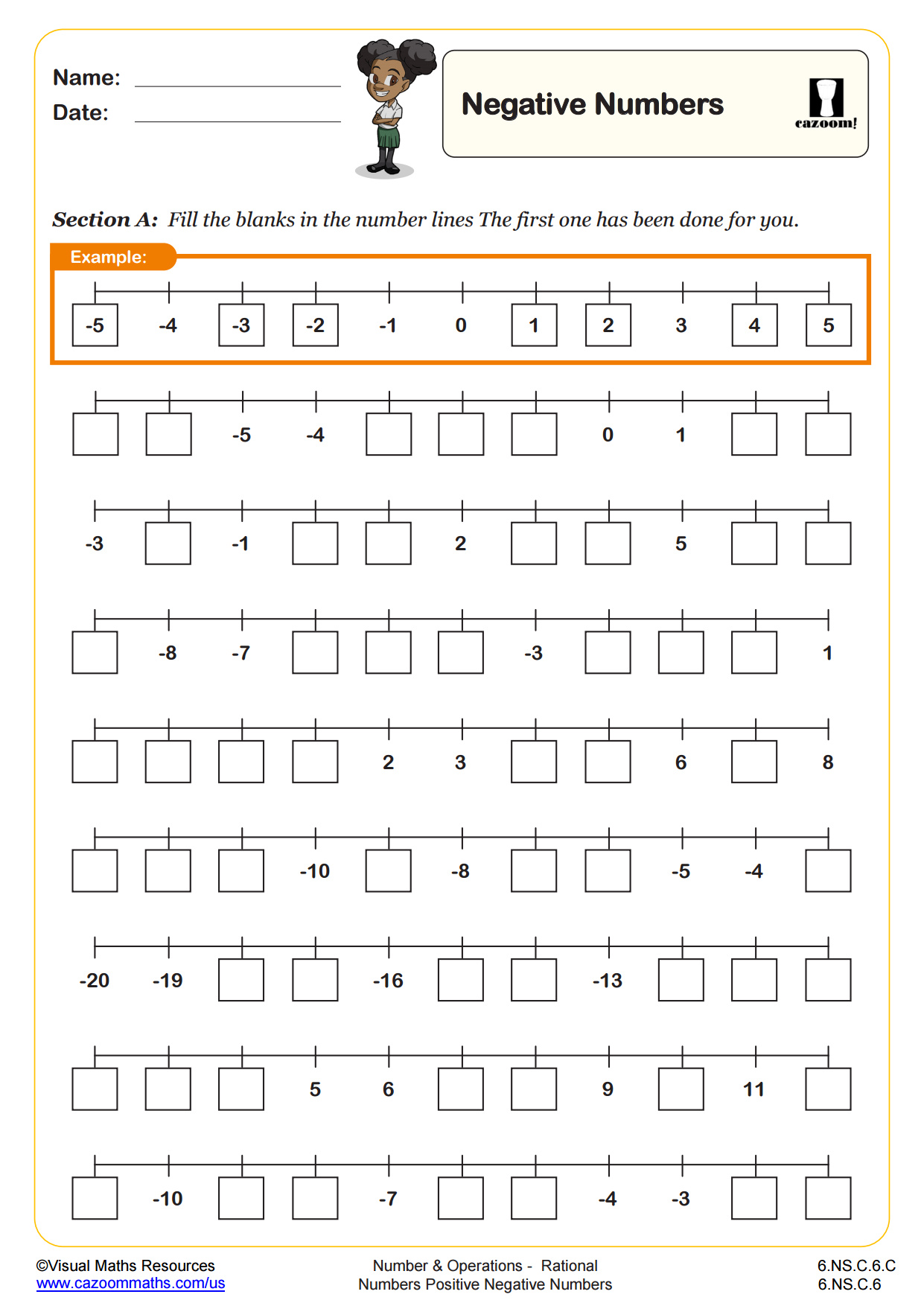Loading...
Back to:
Absolute Value Arithmetic WORKSHEET
Suitable for Grades: 6th Grade, 7th Grade
CCSS: 6.NS.C.6, 7.NS.A.1
CCSS Description: Understand a rational number as a point on the number line; extend number line diagrams and coordinate axes to represent points with negative coordinates.
Apply and extend previous understandings of addition and subtraction to add and subtract rational numbers; represent addition and subtraction on a horizontal or vertical number line diagram. a. Describe situations in which opposite quantities combine to make 0. For example, a hydrogen atom has 0 charge because its two constituents are oppositely charged. b. Understand p + q as the number located a distance |q| from p, in the positive or negative direction depending on whether q is positive or negative. Show that a number and its opposite have a sum of 0 (are additive inverses). Interpret sums of rational numbers by describing real-world contexts. c. Understand subtraction of rational numbers as adding the additive inverse, p – q = p + (–q). Show that the distance between two rational numbers on the number line is the absolute value of their difference, and apply this principle in real-world contexts. d. Apply properties of operations as strategies to add and subtract rational numbers.
Apply and extend previous understandings of addition and subtraction to add and subtract rational numbers; represent addition and subtraction on a horizontal or vertical number line diagram. a. Describe situations in which opposite quantities combine to make 0. For example, a hydrogen atom has 0 charge because its two constituents are oppositely charged. b. Understand p + q as the number located a distance |q| from p, in the positive or negative direction depending on whether q is positive or negative. Show that a number and its opposite have a sum of 0 (are additive inverses). Interpret sums of rational numbers by describing real-world contexts. c. Understand subtraction of rational numbers as adding the additive inverse, p – q = p + (–q). Show that the distance between two rational numbers on the number line is the absolute value of their difference, and apply this principle in real-world contexts. d. Apply properties of operations as strategies to add and subtract rational numbers.
Absolute Value Arithmetic WORKSHEET DESCRIPTION
Enhance your students' understanding of absolute values with this worksheet where they will be calculating the value of expressions involving absolute values. Learners will have to work using the correct order of operations throughout.
In section A, students will match five expressions to their values. Expressions include |9| + |-3| and more.
Next, students will spot, correct and explain the mistakes in the calculations of two different expressions. This gives students the chance to articulate their knowledge before going on to calculate the value of 18 different expressions in section C.
All numbers are positive and negative integers and therefore should be confident in calculating with directed numbers.




